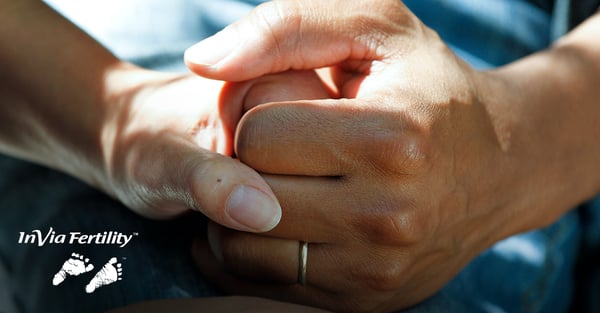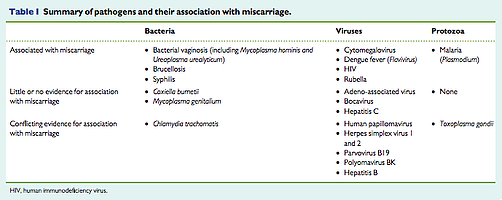
 A lot of information is available about miscarriage. But not all of it is true. Here are 10 facts about miscarriage to help you ensure that you're getting accurate information:
A lot of information is available about miscarriage. But not all of it is true. Here are 10 facts about miscarriage to help you ensure that you're getting accurate information:
A miscarriage is defined as the spontaneous loss of a pregnancy during the first 24 weeks of gestation.
Early miscarriage is defined as pregnancy loss during the first 12 weeks of pregnancy (first trimester) and occurs in 15 – 20% of pregnancies. Late miscarriage occurs during 12 – 24 weeks of pregnancy (second trimester) and occurs in 1 – 2% of pregnancies. Fetal death from the 25th week of pregnancy onward is defined as stillbirth.
A chemical pregnancy is an early miscarriage where the pregnancy test results is positive but the pregnancy does not progress to a point where it is seen on ultrasound. If miscarriage occurs after the pregnancy is seen on ultrasound, it is called a “clinical” miscarriage.
Only 0.5 – 1% of women experience three or more successive miscarriages. This condition is known as recurrent miscarriage or recurrent pregnancy loss (RPL).
Symptoms of miscarriage include bleeding (sometimes heavy) and pain. Some patients will not have any symptoms and the pregnancy loss is diagnosed only on ultrasound (“missed abortion”). Emotionally, a miscarriage can be devastating. Feelings of loss and grief are common.
The causes of miscarriage are often unknown. Almost 50% of early miscarriages can be due to chromosomal abnormalities in the fetus. These include numerical (having an extra chromosome like Trisomy 21 or Down syndrome), or loss of a chromosome (e.g. 45 XO, Turner syndrome), or having an extra set of chromosomes (Triploidy), or structural abnormalities (e.g. translocations).
The age of both parents has a significant role in miscarriage. The incidence of miscarriage is increased if the parents are 35 years old or older and it is 50% higher if the mother is 42 years of age.
Factors such as ethnic origin, psychological state of the mother, very low or very high pre-pregnancy weight, feelings of stress, use of non-steroidal anti- inflammatory drugs, smoking and alcohol consumption have also been associated with significantly higher rates of miscarriage.
Women whose first pregnancy resulted in miscarriage are at a higher risk of the second pregnancy resulting in miscarriage compared with women who had a live birth.
Recently, infections have started to be recognized as a cause of miscarriage. 15% of early miscarriages and 66% of late miscarriages have been attributed to infections. In a recent study published by Oxford Journals, 78% of 101 tissue samples from miscarriage were infected with bacteria (chorioamnionitis), whereas all the control samples from medically induced abortions were uninfected.
Infections that cause miscarriage include bacteria (Bacterial vaginosis (mycoplasma hominis and ureaplasma urealyticum), Brucellosis, Syphilis); viruses (Cytomegalovirus, Dengue fever (Flavivirus), HIV, Rubella) and protozoa (Malaria).
 Image Via Oxford Journals
Image Via Oxford Journals
A first early miscarriage is generally attributed to “bad luck” and no further tests are done. In The U.S., a majority of fertility specialists will complete a series of tests after a second successive miscarriage.
A “late miscarriage”, however, merits further testing. It is important that the products of conception are sent for chromosomal analysis. Other causes of late miscarriages include incompetent cervix and when the immune system rejects a pregnancy (anti-phospholipid antibody syndrome).
To see a fertility specialist who will help you overcome the hurdles of infertility, make an appointment at one of InVia’s four Chicago area fertility clinics.
Recurrent pregnancy loss InVia Fertility Specialists Early pregnancy

Entire Website © 2003 - 2020
Karande and Associates d/b/a InVia
Fertility Specialists
